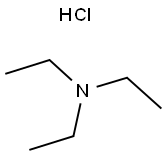Antimony trioxide , 99.99%metalsbasis , 1309-64-4
Synonym(s):
Diantimony trioxide;Antimony(III) oxide;JOS;MJD;SCA3
CAS NO.:1309-64-4
Empirical Formula: O3Sb2
Molecular Weight: 291.52
MDL number: MFCD00011214
EINECS: 215-175-0
| Pack Size | Price | Stock | Quantity |
| 10G | RMB71.20 | In Stock |
|
| 50G | RMB239.20 | In Stock |
|
| 250G | RMB959.20 | In Stock |
|
| 1KG | RMB2559.20 | In Stock |
|
| others | Enquire |
PRODUCT Properties
| Melting point: | 655 °C (lit.) |
||||||||||||||
| Boiling point: | 1550 °C (lit.) |
||||||||||||||
| Density | 5.20 |
||||||||||||||
| bulk density | 800-1300kg/m3 |
||||||||||||||
| vapor pressure | 13.3 hPa (660 °C) |
||||||||||||||
| Flash point: | 1550°C subl. |
||||||||||||||
| storage temp. | Store below +30°C. |
||||||||||||||
| solubility | 2.70mg/l |
||||||||||||||
| form | powder |
||||||||||||||
| Specific Gravity | 5.67 |
||||||||||||||
| color | White |
||||||||||||||
| Odor | wh. cubic or orthorhombic cryst., odorless |
||||||||||||||
| biological source | rabbit |
||||||||||||||
| Water Solubility | Slightly soluble. <0.1 g/100 mL at 20 ºC |
||||||||||||||
| Merck | 14,711 |
||||||||||||||
| crystal system | Cube |
||||||||||||||
| Space group | Fd3m |
||||||||||||||
| Lattice constant |
|
||||||||||||||
| Exposure limits | ACGIH: TWA 0.5 mg/m3 NIOSH: IDLH 50 mg/m3; TWA 0.5 mg/m3 |
||||||||||||||
| Stability: | Stable. |
||||||||||||||
| InChIKey | MUBFITUCTVFSOJ-UHFFFAOYSA-L |
||||||||||||||
| CAS DataBase Reference | 1309-64-4(CAS DataBase Reference) |
||||||||||||||
| IARC | 2B (Vol. 47) 1989 |
||||||||||||||
| NIST Chemistry Reference | Antimony trioxide(1309-64-4) |
||||||||||||||
| EPA Substance Registry System | Antimony trioxide (1309-64-4) |
Description and Uses
This hard shiny metal is often alloyed to other elements. It is used in various industrial fields, such as those making or using batteries, printing machines, bearing, textiles, and ceramics. It caused positive patch test reactions in two workers in a ceramics industry.
Antimony Trioxide (commonly referred to as antimony oxide), Sb2O3 is used to impart flame retardancy to plastics. Although antimony trioxide is found in nature, it is too impure to be used. Flameretardant grades of antimony oxides are manufactured from either antimony metal or the sulfide ore by oxidation in air at 600–800 °C. The particle size and chemical reactivity is determined by the processing conditions, enabling the production of several different grades. Antimony trioxide is from 99.0–99.9 wt % Sb2O3. The remainder consists of 0.4–0.01 wt % arsenic; 0.4–0.01, lead; 0.1–0.0001, iron; 0.005–0.0001, nickel; and 0.01–0.0001, sulfates. It is insoluble in water and the loss on drying at 110 °C is 0.1 wt % max.
Antimony trioxide has been used as a white pigment since ancient times. The pigmentation from antimony oxide in plastics can be controlled and adjusted by the judicious selection of a Sb2O3 grade having a specific particle size. The product with the smallest particle size and the narrowest particle-size range imparts the whitest color and highest opacity. Translucent plastics can be made by using low tint grades with relatively large particles.
Safety
| Symbol(GHS) |   GHS07,GHS08 |
| Signal word | Danger |
| Hazard statements | H315-H319-H360D |
| Precautionary statements | P202-P264-P280-P302+P352-P305+P351+P338-P308+P313 |
| Hazard Codes | Xn,Xi,T |
| Risk Statements | 40-61 |
| Safety Statements | 22-36/37-45-53 |
| RIDADR | 1549 |
| WGK Germany | 2 |
| RTECS | CC5650000 |
| Hazard Note | Irritant |
| TSCA | Yes |
| HazardClass | 6.1 |
| PackingGroup | III |
| HS Code | 28258000 |
| Hazardous Substances Data | 1309-64-4(Hazardous Substances Data) |
| Toxicity | LD50 orally in rats: >20 g/kg (Smyth) |





